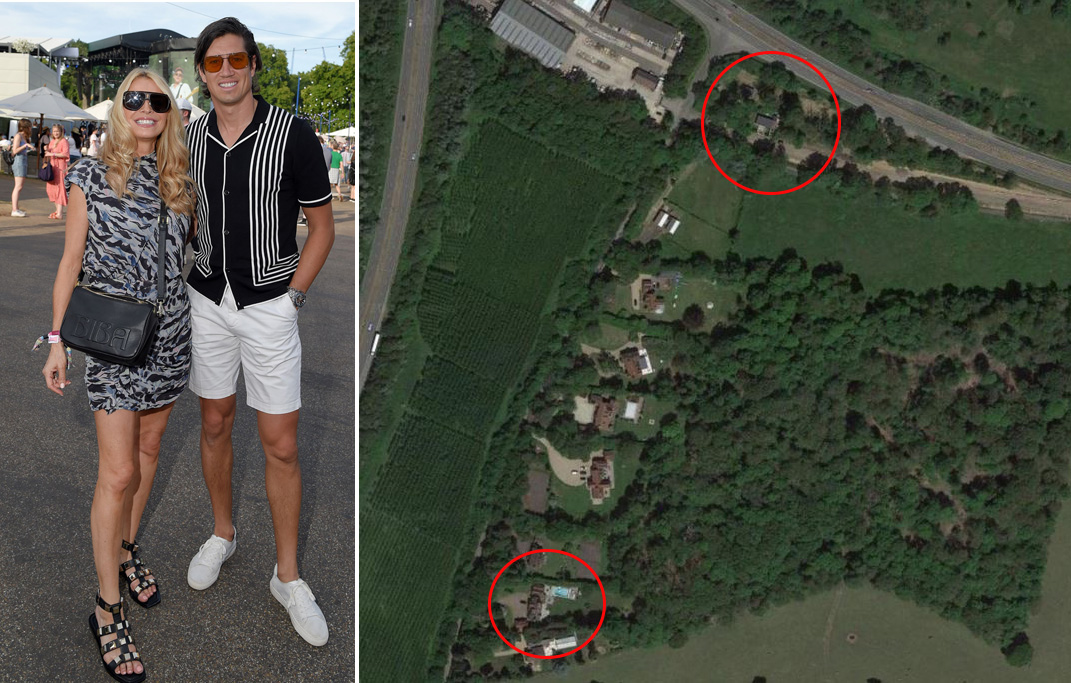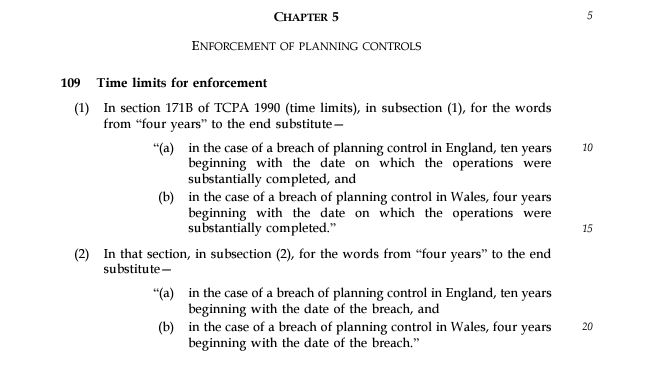'Four year rule' set to be quietly scrapped in latest government planning changes
Homebuilding & Renovating has discovered that the 'four-year rule' — a loophole allowing homes built without planning permission to remain standing — is set to be replaced with a much-longer '10-year rule'

The 'four-year rule', which has helped many homeowners gain permission to keep their houses and projects, is set to be phased out later this year.
The rule allows projects built without planning permission to remain if they have stood without planning permission for at least 4 years and have not been subject to planning enforcement action since the project was completed, as long as it was not deliberately concealed.
However, Homebuilding & Renovating has found that this rule is set to be changed this year as part of the Levelling-Up and Regeneration Bill, with the time period being significantly lengthened from four to 10 years — more than double the existing timeframe — potentially affecting thousands of property owners.
What is the 'four-year rule'?

Need more advice or inspiration for your project? Get two free tickets to the Homebuilding & Renovating Show.
The four-year rule provides property owners and landowners with immunity from planning enforcement action for unauthorised residential developments that have existed for at least four years.
Normally if a project is carried out without the necessary planning permission, the local planning authority can take enforcement action to require the property owner to remove or alter the development. However, if four years have passed since the breach of planning control occurred, the local planning authority can no longer take enforcement action against the property owner, subject to certain planning conditions. The build will however still be subject to building control regulations. This is exemplified by the recent case that will be heard by the Court of Appeal of a log cabin built nearly a decade ago without planning permission near the home of Vernon Kay and Tess Daly.
The legislation, which can be seen on the gov.uk website, explains that " development becomes immune from enforcement if no action is taken:
- within 4 years of substantial completion for a breach of planning control consisting of operational development;
- within 4 years for an unauthorised change of use to a single dwellinghouse;
- within 10 years for any other breach of planning control (essentially other changes of use)"
This is as per section 171B of the Town and Country Planning Act 1990 on enforcement time limits, which currently states that "no enforcement action may be taken after the end of the period of four years beginning with the date on which the operations were substantially completed".
Get the Homebuilding & Renovating Newsletter
Bring your dream home to life with expert advice, how to guides and design inspiration. Sign up for our newsletter and get two free tickets to a Homebuilding & Renovating Show near you.
This is due to change as explained in detail below.

When does the 'four-year rule' not apply?
The four-year rule only applies to specific types of breaches of planning control. These include operations such as building, engineering, mining, or other activities on or under the land.
The four-year rule does not apply to other types of breaches of planning control. In those cases, the ten-year rule applies. The four-year time period also only starts from the date when these operations are "substantially completed".
Furthermore, the rule does not cover unauthorised works on a listed building, in designated areas, conservation areas, or work which required the felling of protected trees where criminal liability can arise directly from the unauthorised action.
And, as farmer Robert Fidler famously discovered after trying to hide a £1 million self build castle behind bales of hay, the rule does not apply in cases where a build has been deliberately concealed to avoid enforcement action.
Online petition's launched to save Robert Fidler's #Surrey house built without planning permission from demolition pic.twitter.com/TxOeEmpCqyNovember 23, 2015
When is the 'four-year rule' set to be scrapped?
The Levelling Up and Regeneration Bill, which was introduced into Parliament in May 2022, is seeking to scrap the 'four-year rule' in England.
Clause 107 of the Levelling-Up and Regeneration Bill (on page 153), which, as drafted, would quietly "amend" what is known as the 'four-year rule' and replace it with a single 10-year rule that would apply to all breaches of planning control.
As such, all Certificate of Lawfulness applicants could soon need to prove 10 years of continuous use. However, until the bill receives royal assent, the four-year rule will continue to be in force.
In addition to the mentioned change, local councils are expected to have a new authority to issue enforcement warning notices for violations of planning regulations before resorting to full enforcement notices.
The purpose of the warning notice is to give the opportunity for the submission of a retrospective planning application within a designated timeframe, typically around 14 or 21 days, to help applicants avoid full enforcement actions.
Clause 107 has lasted the first few rounds of the Bill and is expected to be removed from the statute book in England when the Act receives Royal Assent which is expected to be later this year.
You can see the bill's progress on the government website here.

Does my project fall within the 'four-year rule?'
If you believe your residence or project falls under the four-year rule, but have been told you do not have or have been refused planning permission you can appeal under section 191(2) of the Town and Country Planning Act (1990) whereby:
"(3) For the purposes of this Act any matter constituting a failure to comply with any condition or limitation subject to which planning permission has been granted is lawful at any time if—
(a) the time for taking enforcement action in respect of the failure has then expired; and
(b) it does not constitute a contravention of any of the requirements of any enforcement notice or breach of condition notice then in force."
You can also check out our piece on do I need planning permission to see if your project might be allowed under other planning exemptions

News Editor Joseph has previously written for Today’s Media and Chambers & Partners, focusing on news for conveyancers and industry professionals. Joseph has just started his own self build project, building his own home on his family’s farm with planning permission for a timber frame, three-bedroom house in a one-acre field. The foundation work has already begun and he hopes to have the home built in the next year. Prior to this he renovated his family's home as well as doing several DIY projects, including installing a shower, building sheds, and livestock fences and shelters for the farm’s animals. Outside of homebuilding, Joseph loves rugby and has written for Rugby World, the world’s largest rugby magazine.
